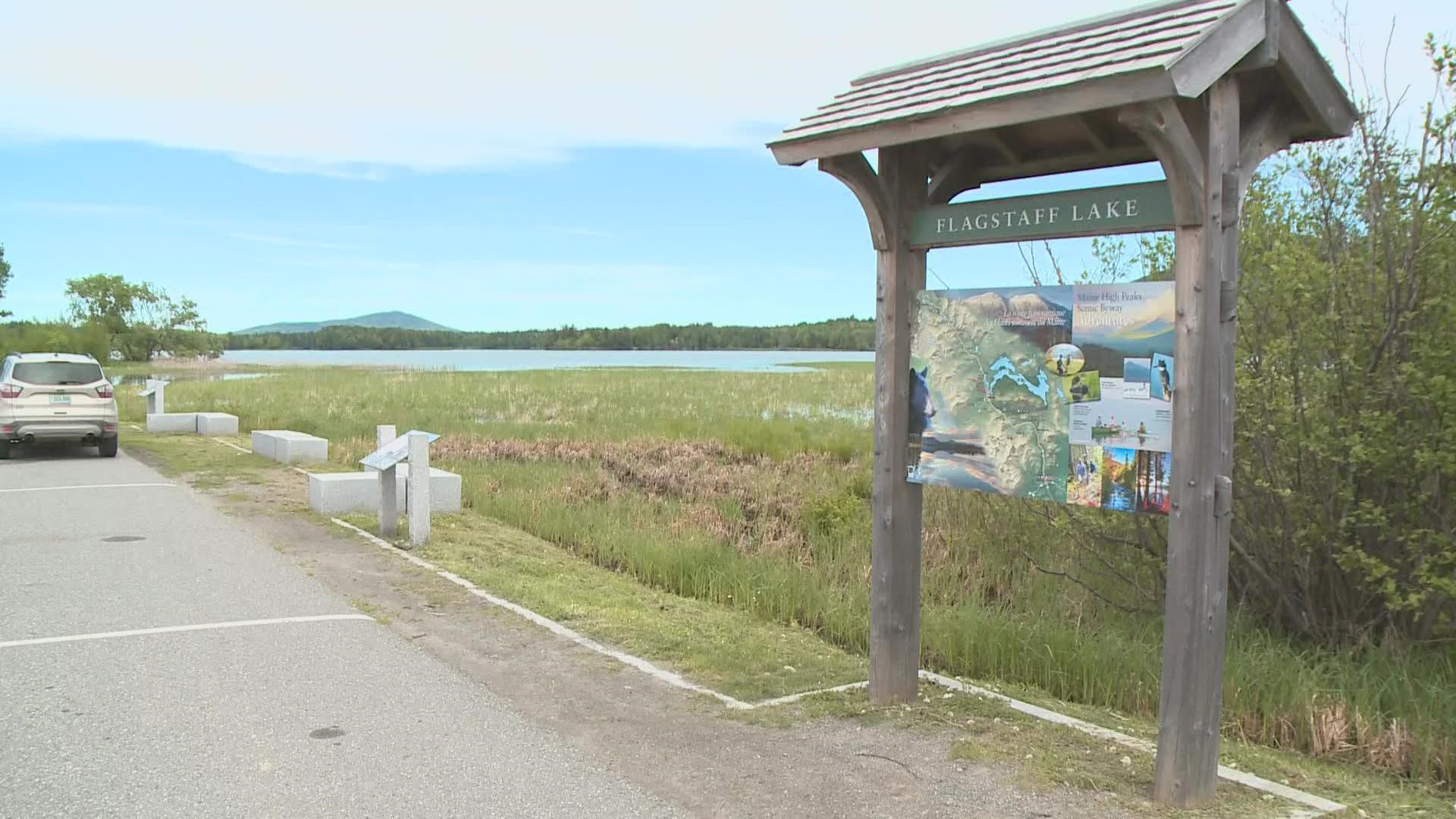EUSTIS, Maine — A year ago this month, much of Maine was in a springtime drought, as weeks went by with little or no rain.
That ended in July, when rain repeatedly drenched the state, followed by other rain storms in summer and fall.
But Eustis and several other areas of Maine’s western mountains, the so-called “boundary mountains” near Canada, were left literally high and dry.
In a swath of the state stretching north to Jackman and even beyond, rain was hard to come by in 2021.
The official drought monitoring map showed the area as “abnormally dry” with some portions as in “moderate drought.”
State climatologist Sean Birkel said the primary reason has been simply a weather pattern that steered storms away, but there is also an element of climate change in the lingering dryness of that part of Maine.
People living in Eustis surely noticed it.
At Cathedral Pines Campground, on the shore of Flagstaff Lake, the lack of rain last summer caused rare problems with the campground’s water supply.


"First time in the 50-year history of the campground they had problem with their well,” Mary Dunn, who runs the store and handles other tasks at the campground, said.
Dunn said a number of other people in town had their wells run very low, and the Eustis town office said the fire department actually pumped water into some people’s wells to make sure they didn’t run dry.
The lack of precipitation continued into winter, with below-normal snowfalls in December and January. Snow amounts increased later in the winter, but Ryan Gordon of the Maine Geological Survey office said it wasn’t enough, with conditions continuing dry through May.
"So the drought, right now, has improved somewhat since the snowmelt started in April, but […] the snow was below normal, so it hasn’t been a huge recharge event,” Gordon said.
A recharge event would mean rebuilding ground water levels so wells don’t go dry again.
That will take much longer, according to Nick Sausulis of the U.S. Geological Survey. The USGS maintains monitoring wells in a number of places, including Eustis, to track Maine ground water levels. He said the Eustis well hit its lowest point since it was drilled nearly 40 years ago.
Sausulis said water levels have not recovered this year because of inadequate rain and because of less snow and an early snow melt.
"We did get some of that snow pack and rainfall but it wasn’t enough to bring us back to that normal range," he said. "We are still below normal. Starting off the spring season below normal, there is the potential to see some critically low ground water levels.”
The latest drought monitoring map shows the mountain region still “abnormally dry” but has removed the "moderate drought" identifier.
Sausulis said it will take significantly more rainfall to return the area to normal water levels.
"That’s not one rainstorm or two rainstorms,” he said.
Those storms may happen, but there is also the risk of extreme rainstorms, which is yet another thing that has been happening more often, as climate change has made Maine's weather less predictable.
Those fast, heavy rains can overwhelm the landscape, with much of the water running off instead of soaking into the ground.
Birkel said another element of climate change is the trend to warmer and shorter winters, which also can pose a risk of encouraging drought.
"The climate portion of this is with shortening winters and a shortening period of snow and ice cover,” Birkel said. “We are seeing a change in when ice breaks on streams and rivers and when peak flows are, and that’s part of the picture of soil dryness.”
That would mean less water to soak into the ground during what would typically be the wet season, can lead to unusual dryness or even drought later in the year.
The western mountain areas are not the only part of the state needing rain. The drought monitoring map, as of Monday, shows the entire coast as "abnormally dry," too.
Birkel said the longer term expectations of climate change are for more precipitation in Maine in general but also more extreme events, such as fast, heavy rainstorms.
And less predictable weather, too.
For this summer, the mountains and the coast both want beautiful, sunny days for the tourists but may also hope to see some longer, soaking rains once in a while. But no one can predict if they will see that.

